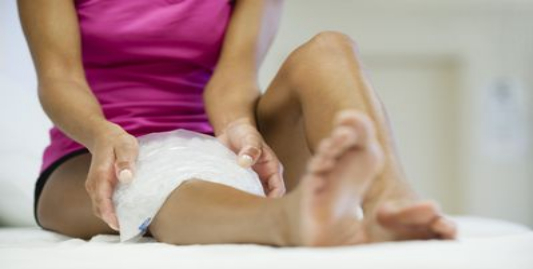
Morey J. Kolber, PT, PhD, CSCS*D, TSAC-F*D, FNSCA
Health & Wellness Coordinator, Palm Beach Gardens Fire Rescue
For decades, the R.I.C.E. protocol (Rest, Ice, Compression, and Elevation) was the go-to recovery method for injuries as it has the ability to reduce pain and swelling. It’s simple, accessible, and effective right? Well, yes and possibly no.
Recent research, along with many “presumed” experts, have raised concerns that icing might slow down the body’s natural healing process. The main issue is that ice causes blood vessels to constrict, which could potentially limit the delivery of healing agents to injured tissues.
But here is the catch: most of this research is based on animal studies (rats), not humans. So while rat muscle that has undergone an experimental injury might show delayed healing with ice, we should not assume the same applies to humans. With regard to humans, a strong body of evidence supports the use of ice for decreasing pain, reducing swelling, and encouraging early movement following injuries of all types or surgery. In fact, movement activates healing at the cellular level and ice may very well be a key pathway to early movement following injury. So yes, apply that ice pack after injury and secure it to the injured area with an ace wrap to add compression.
While icing may be beneficial following injury, the decision to ice after exercise for “muscle soreness” or recovery should be reconsidered. Studies involving humans found that post-exercise ice packs or cold water immersion (e.g. cold plunge), can reduce levels of IGF-1 (an anabolic hormone essential for muscle repair) and impair protein synthesis, the very process that helps muscles rebuild and get stronger. In other words, while ice might ease soreness, it could also blunt the gains you are working so hard for. Evidence suggests waiting several hours after exercise before entering a cold plunge.
Hocutt JE, Jr., Jaffe R, Rylander CR, Beebe JK. Cryotherapy in ankle sprains. Am J Sports Med. Sep-Oct 1982;10(5):316-9.
Wang Y, Li S, Zhang Y, et al. Heat and cold therapy reduce pain in patients with delayed onset muscle soreness: A systematic review and meta-analysis of 32 randomized controlled trials. Phys Ther Sport. Mar 2021;48:177-187.
Erdurmus OY, Oguz AB, Genc S, Koca A, Eneyli MG, Polat O. Comparison of the effects PRICE and POLICE treatment protocols on ankle function in patients with ankle sprain. Ulus Travma Acil Cerrahi Derg. Aug 2023;29(8):920-928.
Kunkle BF, Kothandaraman V, Goodloe JB, et al. Orthopaedic Application of Cryotherapy: A Comprehensive Review of the History, Basic Science, Methods, and Clinical Effectiveness. JBJS Rev. Jan 26 2021;9(1):e20 00016.
Roberts LA, Raastad T, Markworth JF, et al. Post-exercise cold water immersion attenuates acute anabolic signaling and long-term adaptations in muscle to strength training. J Physiol. 2015;593(18):4285-4301.
Malta ES, Dutra YM, Broatch JR, Bishop DJ, Zagatto AM. The Effects of Regular Cold-Water Immersion Use on Training-Induced Changes in Strength and Endurance Performance: A Systematic Review with Meta-Analysis. Sports Med. 2021;51(1):161-174
Exercise is not without its risks and this or any other exercise program many result in injury. As with any exercise program, if at any point during your workout you begin to feel faint, dizzy or have physical discomfort, you should stop immediately and consult a medical professional. You should rely on your own review, inquiry and assessment as to the accuracy of any information made available within this program or via this web site.